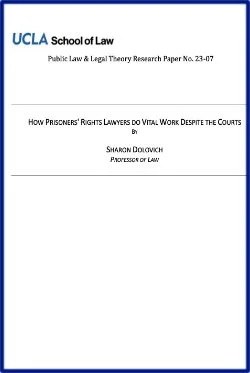By Todd D. Minton
This report provides statistics on the demographic characteristics, most serious offense, and conviction status of persons held in Indian country jails. It also describes facility characteristics, including capacity and staffing. The report supports the mandate established by the Tribal Law and Order Act of 2010 that requires BJS to establish and implement a tribal data collection system, to support tribal participation in national records and information systems, and to annually report to Congress the data collected and analyzed in accordance with the act.
Highlights
After peaking in 2019 (at 2,890 persons) and declining sharply in 2020 (to 2,020 persons) due to the COVID-19 pandemic, the midyear jail population increased for the second consecutive year by midyear 2022 (2,250).
Indian country jails admitted 5,570 persons during June 2022, a 4% decline from the 5,780 admissions during June 2021.
The ratio of jail admissions to average daily population (ADP) was about 2.6 to 1 in June 2022 (5,570 admissions to 2,170 inmates), down from 5.5 to 1 in June 2012 (12,500 admissions to 2,253 inmates).
Four in 10 inmates were held for violent offenses at midyear 2022, up from about 3 in 10 in 2012.
Washington DC:U.S. Department of Justice, Office of Justice Programs, Bureau of Justice Statistics, 2023. 16p.





















